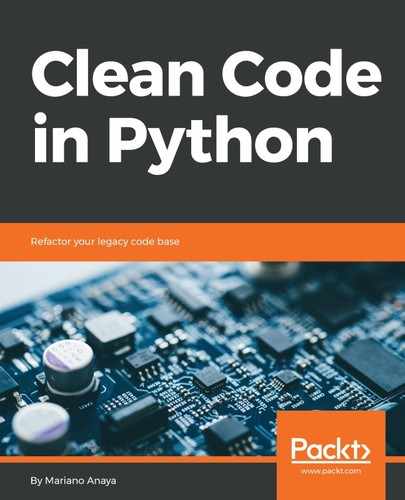Design patterns have been a widespread topic in software engineering since their original inception in the famous Gang of Four (GoF) book, Design Patterns: Elements of Reusable Object-Oriented Software. Design patterns help to solve common problems with abstractions that work for certain scenarios. When they are implemented properly, the general design of the solution can benefit from them.
In this chapter we take a look at some of the most common design patterns, but not from the perspective of tools to apply under certain conditions (once the patterns have been devised), but rather we analyze how design patterns contribute to clean code. After presenting a solution that implements a design pattern, we analyze how the final implementation is comparatively better as if we had chosen a different path.
As part of this analysis, we will see how to concretely implement design patterns in Python. As a result of that, we will see that the dynamic nature of Python implies some differences of implementation, with respect to other static typed languages, for which many of the design patterns were originally thought of. This means that there are some particularities about design patterns that you should bear in mind when it comes to Python, and, in some cases, trying to apply a design pattern where it doesn't really fit is non-Pythonic.
In this chapter, we will cover the following topics:
- Common design patterns.
- Design patterns that don't apply in Python, and the idiomatic alternative that should be followed.
- The Pythonic way of implementing the most common design patterns.
- Understanding how good abstractions evolve naturally into patterns.
